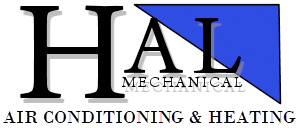When it comes to choosing a furnace for your home, efficiency is a key factor that directly influences both performance and operating costs. Furnace efficiency is measured by a rating known as AFUE, which stands for Annual Fuel Utilization Efficiency. Understanding this rating is crucial in making an informed decision about the type of furnace that best suits your needs. Today, we at Hal Mechanicalwould like to discuss the furnace efficiency rating.
What is AFUE?
AFUE is a percentage that represents how efficiently a furnace converts fuel into heat over the course of a year. The higher the AFUE percentage, the more efficient the furnace is considered to be. AFUE is calculated by dividing the amount of heat actually generated by the furnace by the total energy content of the fuel consumed.
Interpreting AFUE Ratings
1) Standard Efficiency (80-82% AFUE). Furnaces with AFUE ratings in this range are considered standard efficiency. They are generally less expensive upfront but may result in higher operating costs over time due to lower fuel efficiency.
2) Mid-Efficiency (83-89% AFUE). These furnaces offer a balance between cost and efficiency. They are more energy-efficient than standard models, providing cost savings over the long term while remaining relatively affordable.
3) High-Efficiency (90% AFUE and above). Furnaces with AFUE ratings of 90% or higher are classified as high-efficiency. While they come with a higher initial cost, they can significantly reduce energy bills by converting a larger portion of fuel into heat. This category often includes condensing furnaces, which extract additional heat from combustion gases.
Factors Influencing AFUE
1) Fuel Type. The type of fuel a furnace uses affects its AFUE. For example, electric furnaces tend to have higher AFUE ratings compared to gas or oil furnaces.
2) Technological Advances. Advances in furnace technology, such as variable-speed motors and advanced heat exchangers, contribute to higher AFUE ratings by improving overall efficiency and performance.
3) Proper Sizing and Installation. Ensuring that your furnace is appropriately sized for your home and professionally installed is critical for achieving the specified AFUE. An improperly sized or installed furnace may not operate at its rated efficiency.
Considerations for Choosing a Furnace
1) Budget. While high-efficiency furnaces offer long-term cost savings, they often come with a higher upfront cost. Consider your budget and weigh the initial investment against potential energy savings over time.
2) Climate. In colder climates, where the furnace operates more frequently, a higher AFUE may result in more significant energy savings. In milder climates, a standard or mid-efficiency furnace may be sufficient.
3) Environmental Impact. High-efficiency furnaces not only save on energy costs but also have a smaller environmental footprint by using fuel more efficiently.
Furnace & Boiler Heating Services in Aliante, Centennial, Desert Shores, Eldorado, Enterprise, Green Valley Ranch, Henderson, Lone Mountain Village, North LV, Peccole Ranch, Paradise, Silverado Ranch, Spring Valley, Summerlin, Sunrise Manor, Tuscany Village, Whitney, Winchester & Las Vegas Nevada
Understanding AFUE ratings is essential for making an informed decision when selecting a furnace for your home. While higher AFUE often correlates with greater efficiency, it’s crucial to consider factors such as budget, climate, and environmental impact. By choosing a furnace with an appropriate AFUE rating, you can enjoy optimal comfort while minimizing energy consumption and costs over the long term. When in doubt, consult with HVAC professionals who can provide tailored advice based on your specific needs and circumstances. Contact Hal Mechanical today for your furnace services in the Las Vegas Valley.






